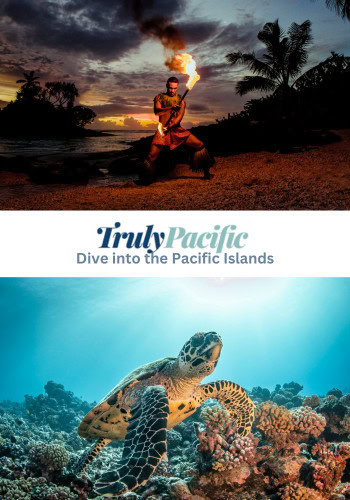Mildura is many things. It’s a gateway to the desert and outback adventures, Australia’s first irrigation settlement and the fruit bowl of Victoria’s far northwest. Now, with Bruce Munro’s latest installation in place, it’s also a city of lights.
Flying into Mildura, a bright patchwork of crops and vineyards sprawls in all directions below, the mighty Murray River weaving its way like a dreamtime snake between the verdant green riverbanks and the city built around them.
The word Mildura is derived from the Aboriginal word for ‘red earth’ and the soft grey/green swathes of eucalyptus trees that grow in the arid conditions here create a beautiful contrast.
Together, these elements form the quintessential Aussie landscapes that this region is known for, classically captured by colonial artists venturing into the outback.
Our plane lands, and although it’s almost winter, I feel the heat of the sun as we disembark. Mildura is known for being Victoria’s tropical north, with more sunny days than Queensland, and it’s also one of the reasons why produce thrives here.
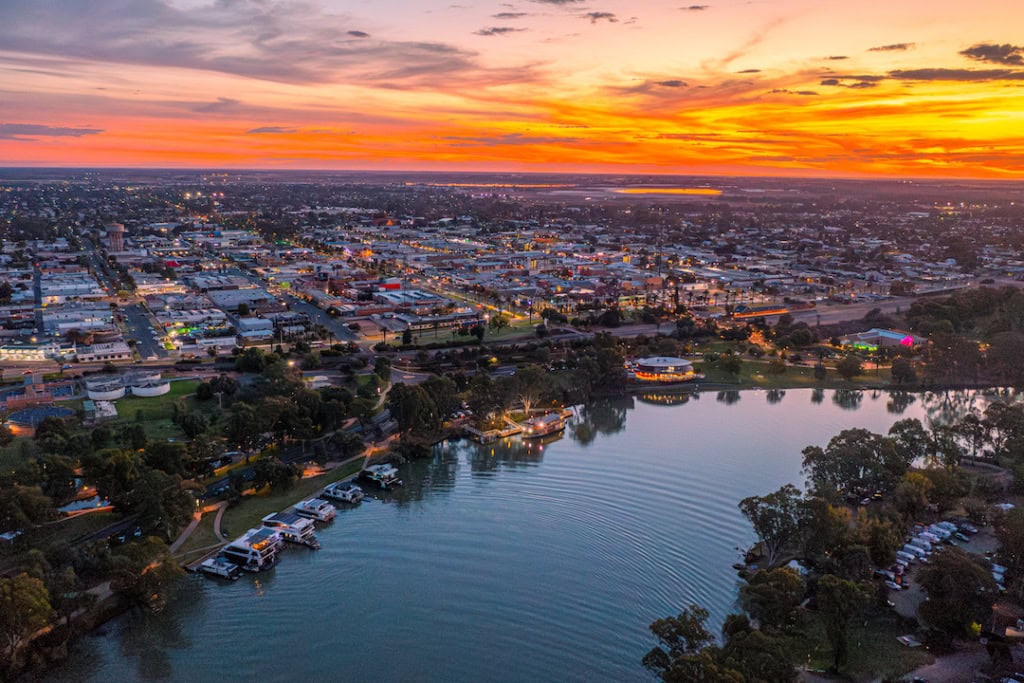
This vibrant agricultural city that was built in the middle of a desert was the brainchild of entrepreneurs William and George Chaffey, who moved from California to Australia in 1886 armed with an incredibly ambitious dream of creating Australia’s first irrigation city.
Considered experts in irrigation, the brothers recognised the fertile red soil and the clean water in the Murray River and knew it would be an ideal place to produce food. William (known as WB) also wanted to introduce a more sophisticated drink than spirits (which most people drank back then), in the form of table wine. So grape growing was also on his agenda.
Without the brothers, Mildura would not exist, so my first stop is WB’s former homestead, which he built in 1890 and named Rio Vista – Spanish for river view.
Walking around the magnificent Queen Anne-style home, I learn about how the brothers launched their irrigation project, which not only led to the creation of a city around it, but also to the successful production of all types of fruits and vegetables.
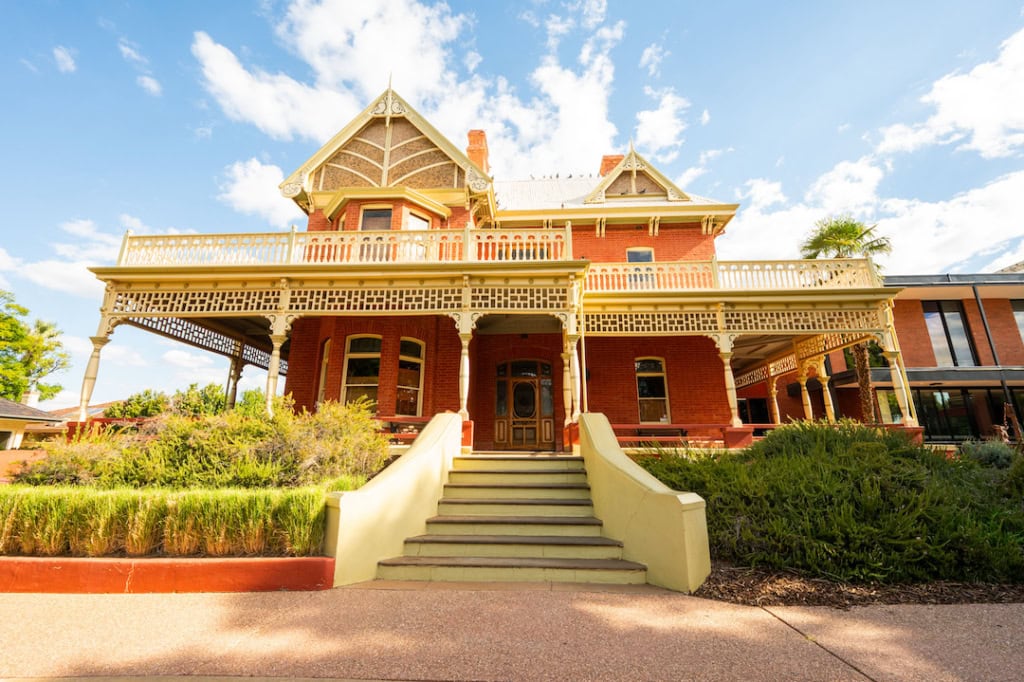
Sadly, the brothers’ company went into liquidation in 1895, due to an economic downturn, a low river that stranded crops, and the delay of a railway being implemented, which would have transported the masses of fresh produce out of Mildura. Instead, it was mainly left to rot in the hot sun.
The villa fell into disrepair, and it was only brought back to its former glory after being bought by Mildura Council in the 1950s, with part of it was converted into Northern Victoria’s largest arts and culture hub – Mildura Arts Centre.
I stroll through the immaculately restored villa then head into the adjoining gallery, which has five light-filled modern gallery spaces filled with a huge array of permanent artworks and sculpture, and a range of ever-changing exhibitions.
I order a cup of tea from the gallery’s café, take a seat in the sun on the villa’s wide verandah, and imagine the many successes, trials and tribulations that played out here while a settlement was painstakingly established in the middle of a desert.
Tea finished, a ten-minute walk takes me down to the Murray River, where a signature Mildura scene unfolds: a paddle-steamer and a houseboat cruise along, people happily picnic on the river’s edge, a pelican soaring in bluebird skies.
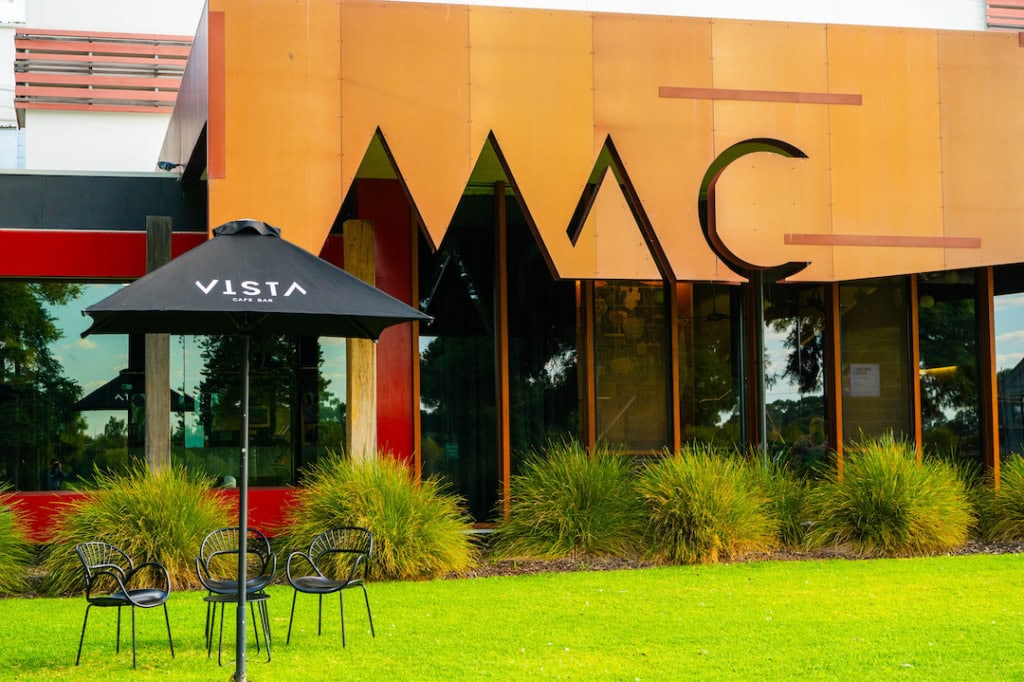
Tasting Victoria’s tropical capital
A great place to see a lot of Mildura’s produce on display is Twenty Seven, a cosy café that has a small goods store with a selection of goods such as chocolates, the region’s famous sultanas, pasta, jam, chocolate, pink salt and more. I make a pit stop for a coffee, buy some goodies to enjoy later, then head off to explore.
It’s always great to get the lowdown on a destination from locals, so I join a tour with Discover Mildura, run by husband-and-wife duo, Phil and Alison, who have been showing guests around for more than 20 years.
First stop is the salt flats and mines of Murray River Salt, which produces Australia’s only naturally pink salt – premium gourmet salt flakes derived from the brine of the Mourquong Salt Mitigation Basin.
It’s mainly commercial salt being mined here (sodium chloride) for things such as tanning, pool cleaning and chemical production, but the speciality salts and pink salt flakes are loved by chefs and true foodies around the globe.
As I walk around the mountains of salt ready to be transported, the reddish pink and white salt flats shimmer in the sun, the ethereal landscape like a watercolour painting flecked with shimmering crystals. Patches of red earth are dotted with tufts of bright native grasses, and a bright blue sky sets off all the hues in a dazzling display.

Leaping from savoury to sweet, our next stop is Orange World, where host Mario delights guests with his informative and hilarious tours of his 50-acre working citrus farm. There’s a retro café and gift store selling all things citrus, and we enjoy a glass of freshly squeezed juice before heading on our way, armed with the knowledge that Mildura produces 20 per cent of Australia’s citrus.
On our tour, Alison fills me in on the huge array of produce coming out of Mildura, including olive oil, avocados, stone fruits, melons, asparagus, grapes and of course, sultanas. Interestingly, the region is also called Sunraysia, due to the intensive sun. The term Sun-Raysed was coined by early aviator John ‘Jack’ De Garis, who cleverly marketed dried fruit from here, encouraging more of its consumption in Australia.
Today Mildura produces 95 per cent of the country’s raisins and sultanas, also producing 10-15 per cent of Australian almonds, and is one of the country’s largest producer of pistachios.
For garden lovers, fit in a visit to the Australian Inland Botanic Gardens, which is the Southern Hemisphere’s first semi-arid botanical gardens. It has a huge range of Australian natives from both arid and higher rainfall areas, as well as many exotic plantings grouped by the country of their origin.
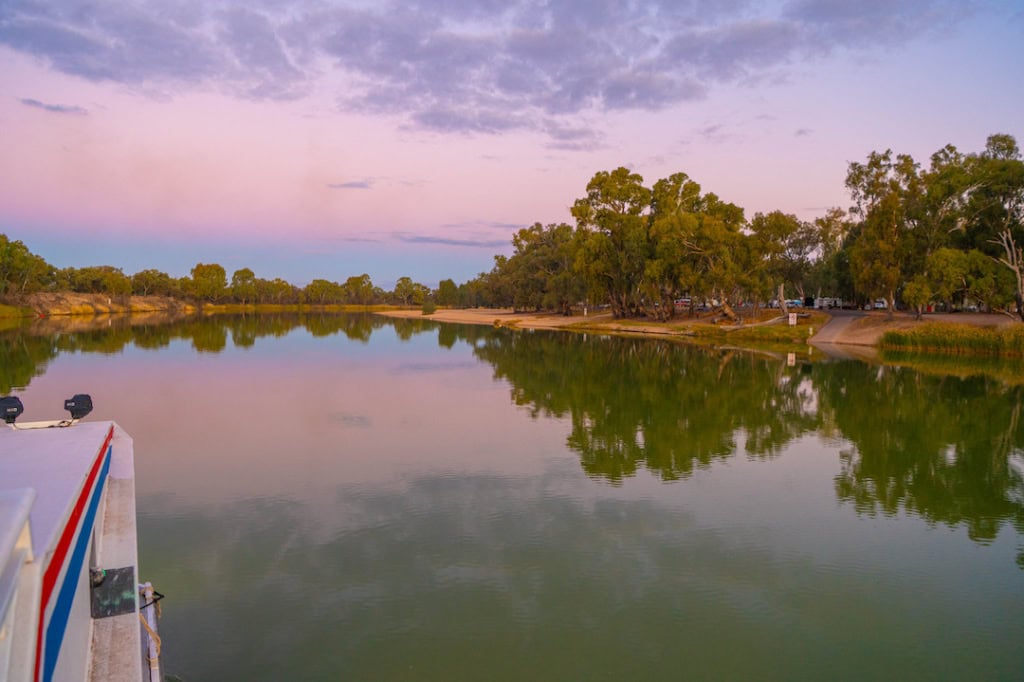
Lighting up Mildura
I’m here for the produce, water, and the lights, so as dusk approaches, I board a spacious two-storey boat with Mildura Cruises for a different perspective of the city.
Music plays as we cruise along the Murray River, enjoying some local beer and wine and a generous tapas plate loaded with local goodies.
One of the highlights is the boat passing through Lock 11. The gates close on either side of us, the water level is lowered, and when the gates open, we glide through.
A peacefulness descends as the sky lights up with a sensational Mildura sunset – layers of pale purple, pink and blue reflected all around us on the still river bordered by gums.
The boat docks near the city, and after waving goodbye to the friendly staff, I follow a well-marked path to the Trail of Lights on Lock Island, which is the latest immersive, site-specific light installation by Australian-English artist Bruce Munro.
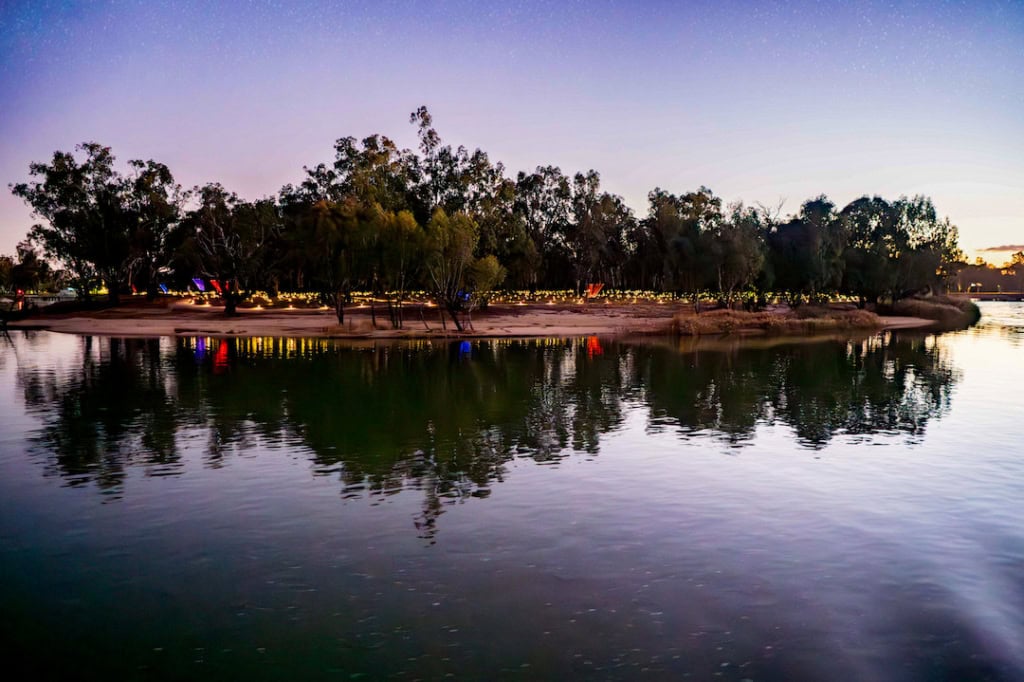
Bruce had a dream of illuminating Lock Island, giving people a chance to wander through a vast area of Australian bushland, surrounded by a magical carpet of lights.
Walking amongst 12,500 glowing sculptures that Bruce calls ‘Fireflies’, I follow winding trails in the semi-dark, calm space, the delicate alien-like sentinels fanning out in all directions.
Despite being surrounded by the lights and knowing that other people are out there enjoying the trail, I’m surprised by the quietness and the sense of being alone.
A whisper-quiet breeze stirs the fireflies into a mesmerising slow dance, and they move gently, like upturned flowers, or jellyfish floating in a black sea, each of their fine 24 individual fibre-optic strands gracefully swaying.
It’s meditative, and the more you walk into the masses, the more keep appearing. When a guest experience ambassador asks if I need directions, I’m surprised to find a real person standing before me.
Along the river’s edge are clusters of long fibre-optic rods of vertical light called ‘Gone Fishing’.
More than 3,000 stems continually, slowly change colour – vibrant reds, yellows and blues shooting into the night like laser beams.
As I leave Lock Island, I think of Bruce expressing what he hopes people will take away from this extraordinary experience. “A lifting of the heart and spirit,” he said. “Let the art speak to your heart, and the rest will take care of itself.”
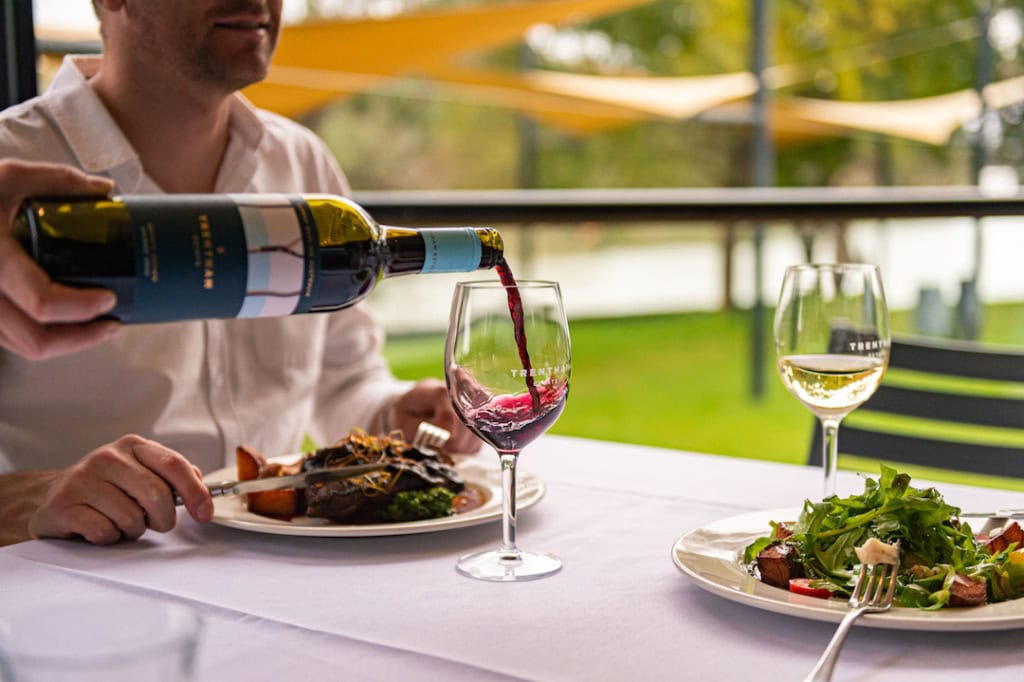
Dining by the mighty Murray River
There are so many wonderful places to dine and have a drink in Mildura – from cafes to pubs, clubs, restaurants and cocktail bars – I’m completely spoilt for choice.
I tuck into some awesome lamb tacos and a local chardonnay at Sip Cocktail Bar & Eatery, enjoy a coffee and super tasty acai bowl at the cute pink van-style café called Jessica Rabbit, and dine on a fresh, delicious chicken Caesar salad at art deco inspired Honey Bar & Rooftop.
However, I keep being drawn back to the river, and as the famous Mildura sun shines and boats cruise by, I settle in for a long, relaxing lunch at The Mildura Boathouse Eatery & Bar.
On the banks of the Murray River facing the popular Mildura, Buronga Riverside Caravan & Holiday Park, this cool restaurant, bar and venue space has a fresh, extensive menu, excellent local beer and wine offerings, fantastic cocktails and great service. It’s packed with people enjoying the food and the sunshine, laughter and conversation filling the air.
I chose a Vietnamese chicken salad packed with local produce, with some prawns on the side, and a lovely local Pinot Grigio. It’s a true taste of Mildura, and you can’t beat the view.
The following day I had to head across to NSW for lunch at Trentham Estate Wines, which is a 20-minute drive through the town of Gol Gol.
Fun fact – the Murray River’s water is owned by NSW, so if you’re fishing on the banks of the Murray in Mildura, you need a NSW fishing license!
It would be remiss of me to not visit a winery, as WB Chaffey didn’t just bring irrigation to this region, he bought wine. Chaffey wanted to introduce Australians to drinking wine with a meal. Aka table wine.
After a lovely wine tasting with a delightful sommelier, I find myself seated on the grassy lawns of the mighty Murray, looking back across at Mildura’s distinctive mallee bushland.
I have a glass of the winery’s prized Verdelho and a grilled asparagus tart before me as an entree. There’s also some of estate’s olive oil and a wonderful dukkha made with local nuts to indulge in while I take in the superb view.
My dishes encapsulate why this agricultural city is so special. As Bruce Munro said, you fly in, and you see how productive this city is – fields of food and wine that are thriving in what was once a desert.
Fast forward 140 years and look at Mildura – all lit up and shining bright, as it should be.
To read about the top outdoor activities in Mildura, click here.



